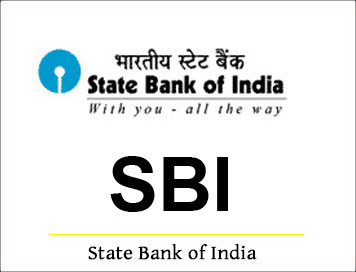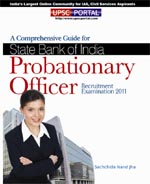NEW! E-BOOKS (PDF)
NEW! SBI PO Study Notes | IBPS PO Exam
(Download) SBI Clerical Staff Selection Exam Sample Paper: General English

Sample Paper: SBI Clerical Staff Selection (General English)
Directions—(Q. 41–55) Read the following passage carefully and answer the questions given below it. Certain words are given in bold to help you to locate them while answering some of the questions.
A large majority of the poor in India are outside the formal banking system. The policy of financial inclusion sets out to remedy this by making available a basic banking ‘no frills’ account either with nil or very minimum balances as well as charges that would make such accounts accessible to vast sections of the population. However, the mere opening of a bank account in the name of every household or adult person may not be enough, unless these accounts and financial services offered to them are used by the account holders. At present, commercial banks do not find it viable to provide services to the poor especially in the rural areas because of huge transaction costs, low volumes of savings in the accounts, lack of information on the account holder, etc. For the poor, interacting with the banks with their paper work, economic costs of going to the bank and the need for flexibility in their accounts, make them turn to other informal channels or other institutions. Thus, there are constraints on both the supply and the demand side.
Till now, banks were looking at these accounts from a purely credit perspective. Instead, they should look at this from the point of view of meeting the huge need of the poor for savings. Poor households want to save and contrary to the common perception, do have the funds to save, but lack control. Informal mutual saving systems like the Rotating Savings and Credit Associations (ROSCAs), widespread in Africa and ‘thrift and credit groups’ in India demonstrate that poor households save.
For the poor household, which lacks access to the formal insurance system and
the credit system, savings provide a safety net and help them tide over crises.
Savings can also keep them away from the clutches of moneylenders, make formal
institutions more favourable to lending to them, encourage investment and make
them shift to more productive activities, as they may invest in slightly more
risky activities which have an overall higher rate of return.
Research shows the efficacy of informal institutions in increasing the savings
of the small account holders. An MFI in the Philippines, which had existing
account holders, was studied. They offered new products with ‘commitment
features’. One type had withdrawal restrictions in the sense that it required
individuals to restrict their right to withdraw any funds from their own
accounts until they reached a self-specified and documented goal. The other type
was deposit options. Clients could purchase a locked box for a small fee.
The key was with the bank and the client has to bring the box to the bank to make the deposit. He could not dip into the savings even if he wanted to. These accounts did not pay extra money and were illiquid. Surprisingly, these products were popular even though these had restrictions. Results showed that those who opted for these accounts with restrictions had substantially greater savings rates than those who did not. The policy of financial inclusion can be a success if financial inclusion focuses on both saving needs and credit needs, having a diversified product portfolio for the poor but recognising that self-control problems need to be addressed by having commitment devices. The products with commitment features should be optional. Furthermore transaction costs for the poor could be cut down, by making innovative use of technology available and offering mobile vans with ATM and deposit collection features which could visit villages periodically.
41. What is the aim of the financial inclusion policy ?
(A) A focus on savings needs rather than credit needs of the poor
(B) Minimising utilisation of technology in banks so as to reduce transaction
costs for the poor
(C) To boost low savings volumes in banks by encouraging savings among the rural
poor
(D) To make formal basic banking services available to the poor
(E) To regulate the rate at which moneylenders lend to the poor
42. The author’s main objective in writing the passage is to—
(A) Criticise the concept of financial inclusion
(B) Point out the problems of financial inclusion
(C) Discuss ways of making the financial inclusion policy successful
(D) Compare financial inclusion policies of different countries
(E) Cite research in support of role of MFIs in achieving financial inclusion
43. Which of the following can be inferred about products with commitment
features ?
1. Demand for such products was high.
2. They were an effective means of increasing the savings of small account
holders.
3. Such facilities can only be offered by informal institutions like MFIs.
(A) All 1, 2 and 3
(B) Only 2
(C) Both 1 and 2
(D) Both 1 and 3
(E) None of these
44. Why do the poor not utilise banking services ?
1. Informal institutions offer higher rates of interest than those in banks.
2. Costs of reaching banks have to be borne by the poor.
3. Bank personnel do not treat the poor respectfully because their savings
amounts are minimal.
(A) Only 2
(B) Both 1 and 2
(C) Both 2 and 3
(D) All 1, 2, and 3
(E) None of these
45. Which of the following is a recommendation made by the author
regarding financial inclusion ?
(A) Reduce the paper work involved by seeking less information about the account
holder
(B) Lower transaction costs by utilising latest technology.
(C) Make commitment features compulsory for all savings accounts
(D) Entrust the responsibility of financial inclusion solely to MFIs
(E) Provide credit facilities even to those without savings accounts

